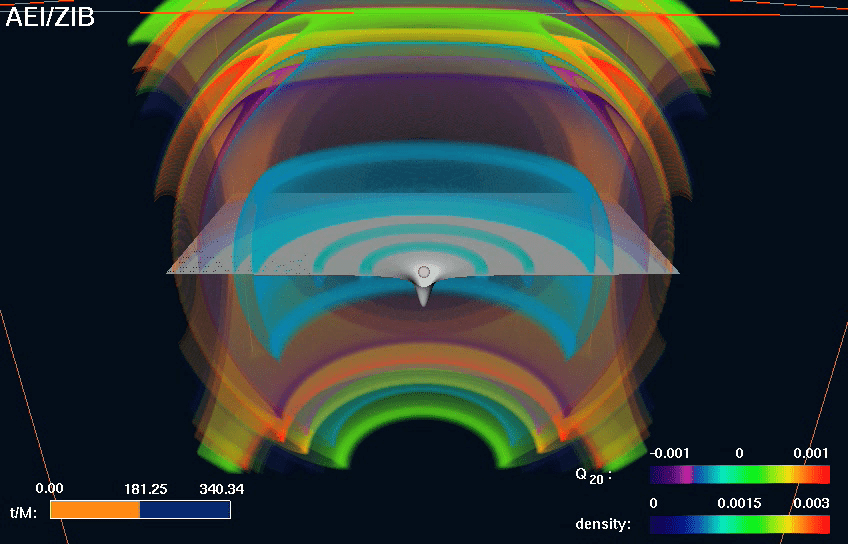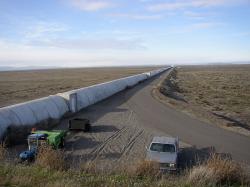"Listening" for Gravitational Waves to Track Down Black HolesGravitational waves are predicted by Einstein's 1916 general theory of relativity, but they are notoriously hard to detect and it's taken many decades to come close to observing them. Now, with the help of a supercomputer named SUGAR (Syracuse University Gravitational and Relativity Cluster), two years of data collected by the Laser Interferometer Gravitational-Wave Observatory (LIGO) will be analyzed to find gravitational waves. Once detected, it is hoped that the location of some of the Universes most powerful collisions and explosions will be found, perhaps even hearing the distant ringing of celestial black holes…
LIGO, a very ambitious $365 million (National Science Foundation funded) joint project between MIT and Caltech founded by Kip Thorne, Ronald Drever and Rainer Weiss, began taking data in 2005. LIGO uses a laser interferometer to detect the passage of gravitational waves. As a wave passes through local space-time, the laser should be slightly distorted, allowing the interferometer to detect a space-time fluctuation. After two years of taking data from LIGO, the search for the gravitational wave signatures can begin. But how can LIGO detect waves being generated by black holes? This is where SUGAR comes in. Syracuse University assistant professor Duncan Brown, with colleagues in the Simulating eXtreme Spacetimes (SXS) project (a collaboration with Caltech and Cornell University), is assembling SUGAR in the aim to simulate two black holes colliding. This is such a complex situation that a network of 80 computers, containing 320 CPUs with 640 Gigabytes of RAM is required to compute the collision and the creation of gravitational waves (as a comparison, the laptop I'm typing on has one CPU with two Gigabytes of RAM…). Brown also has 96 Terabytes of hard disk space on which to store the LIGO data SUGAR will be analyzing. This will be a massive resource for the SXS team, but it will be needed to calculate Einstein's relativity equations.
By combining the observational capabilities of LIGO and the computing power of SUGAR (characterizing the signature of black hole gravitational waves), perhaps direct evidence of gravitational waves may be found; making the first direct observations of black holes possible by "listening" to the gravitational waves they produce.
Source: Science Daily
برگرفته از هنر فیزیک محمد میرزایی |

